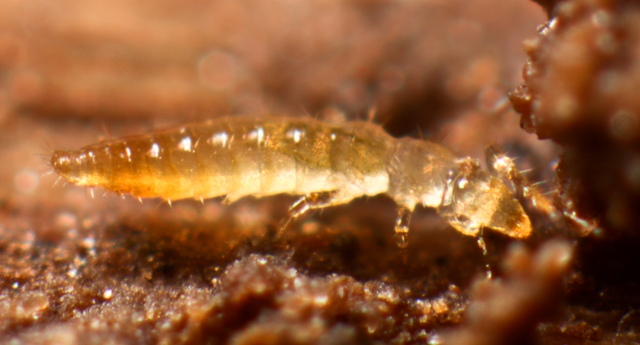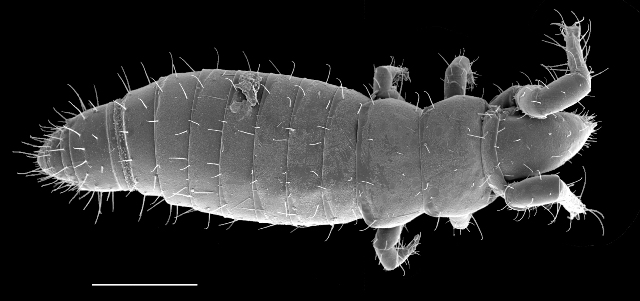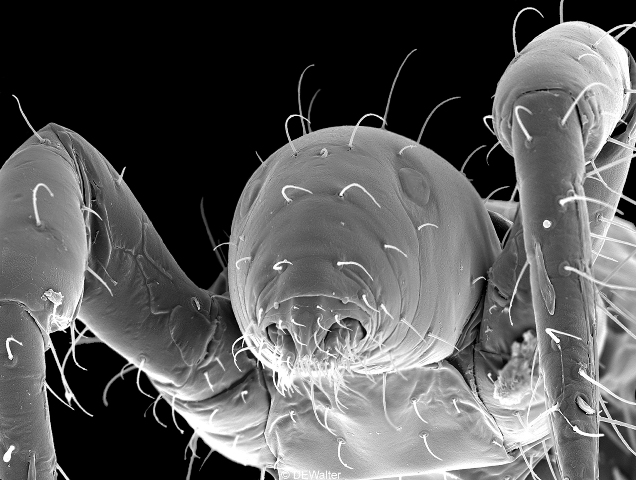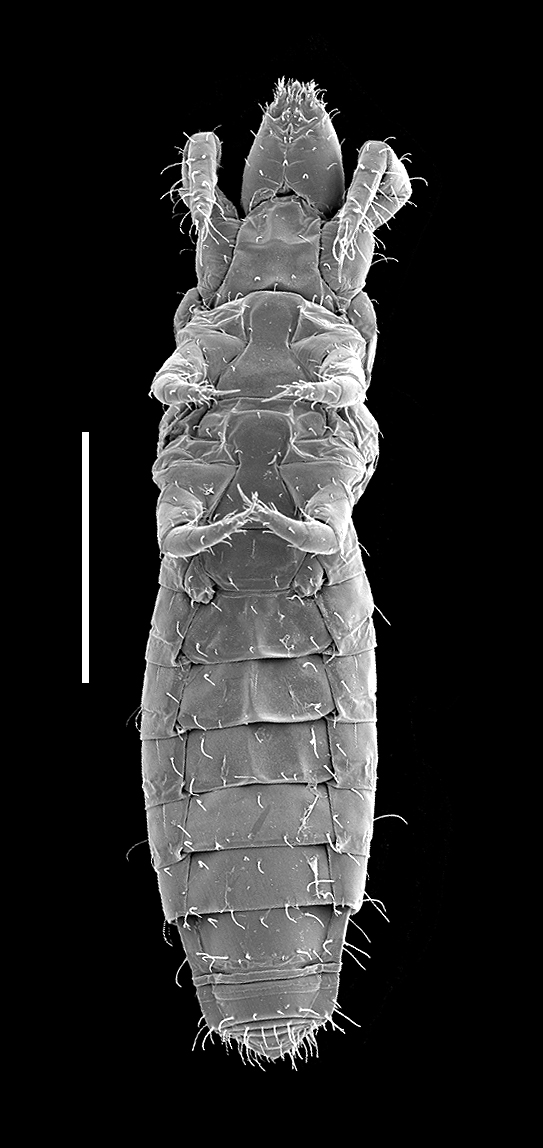Phylum Arthropoda
Subphylum Hexapoda
Class and Order Protura
Common name: proturans
Overview
Protura are very small (<2 mm in length), pale, elongate, delicate hexapods. They lack wings, eyes and cerci and have reduced antennae and sucking mouthparts. The forelegs of proturans are not used for walking and are carried forward so that they resemble antennae and are used for sensory purposes. Proturans are quite common and abundant in soil and leaf litter but, due to their small size, they are rarely seen.
Distribution and diversity
Proturans are known from all regions of the world and occur across Australia. Globally about 500 species are described. Three families, 10 genera and 32 described species are recorded for Australia. At least four species are probably introduced. Many species in existing collections await description and it has been predicted that further collecting will significantly increase the total number of species recorded from Australia.
Life cycle
Little is known of the life cycles of most proturans. They have an egg stage and pass through four immature larval stages before reaching maturity. Immature proturans resemble adults, but have fewer abdominal segments. Additional body segments are gained as they moult and grow (i.e. anamorphic development), a feature unique among the hexapods. It is unknown if adults continue to moult throughout their life.
Feeding
Proturans mouthparts are adapted for sucking. The diet is largely unknown, but they have been observed sucking out the contents of hyphae of mycorrhizae and soil fungi; they may also feed on decaying plant matter.
Ecology
Proturans are widespread throughout Australia, particularly in forested habitats where they are associated with high levels of organic matter, and can be very abundant. Typically, they occur in moist microhabitats such as in soil, leaf litter or moss; some species have been found under rocks and occasionally under the bark of trees. Proturans may be quite common but being so small and cryptic they are rarely seen.

Proturan from England
Image credit:
� Andy Murray used with permission

Dorsal view of a proturan from Queensland
Image credit: � David E. Walter
used with permission

Frontal view of a proturan from Queensland
Image credit: � David E. Walter
used with permission

Ventral view of a proturan from Queensland
Image credit: � David E. Walter
used with permission










